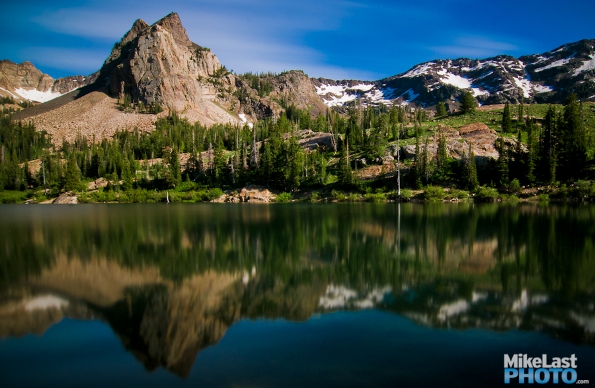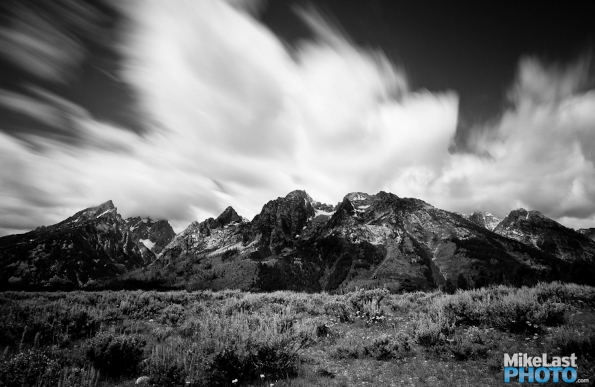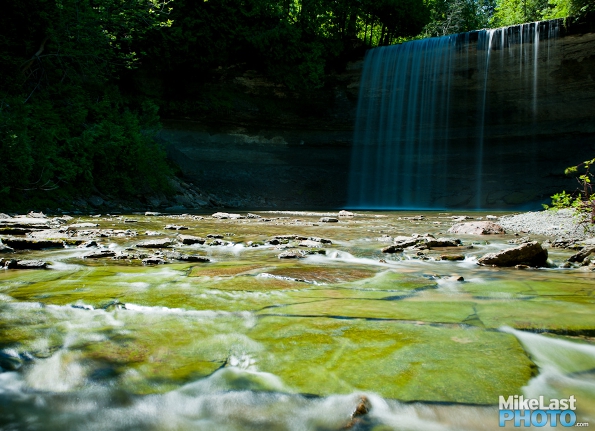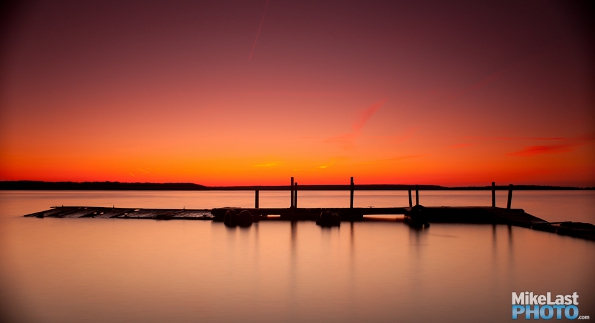When many photographers think about long exposures, late nights and star trails are the first things that come to mind. Just because it’s a sunny day doesn’t mean you should give up your hopes on silky-smooth water or wispy clouds.

There are three components to exposure: aperture, shutter-speed and ISO. If the exposure during the day is ISO 100, 1/250th at f8, we need to find a way to get that 1/250th into the 1-4 second range. We could lower our ISO, but most digital cameras max out at ISO 100 or 200 on the low end, so no luck there. We could crank up the aperture, and we certainly will use it to cut out some light, but most 35mm / digital lenses will go to f22 at the smallest size. We’ve cut a few stops of light, but at f22 we run into some diffraction issues (we’ll save that for another day). So, we’ll go to f16. From f8 to f16, we cut out two stops of light, and can drop our shutter speed to 1/60. Now we’re out of options.
Not so fast, what about some neutral density? Never heard of it?
Neutral density has a variety of uses and applications. Flashes, soft gradients, hard gradients… but we’re looking at straight neutral density filters today. The general idea is to block some light from hitting the filter. Think of the welder staring at bright sparks all day, similar principle. Or simpler still, sunglasses. It’s too bright at the beach, so you grab some shades and it’s bearable.

How Many Stops?
First you’ll need to figure out how many stops of light you want to get rid of. If you’re aiming for some wispy cloud landscapes or some water ribbons on cascading waterfalls, you’re looking at the 2 to 10 second mark, possibly even longer on the clouds. So if your base exposure was ISO 100, 1/250 at f8, and you were hoping to shoot around ISO 100, 4 seconds at f8, that’s 10 stops. Neutral density filters are made in a variety of strengths, ranging from 1 to 10 stops. The amount of filtration you need depends on the scene you’re shooting, but bright sunny days will have you looking for 6-10 stops.
Vari-ND Filters
Fairly new to the market are the Vari-ND filters. There are a few manufacturers such as Singh-Ray and LightCraft Fader ND. The general concept here is that you rotate the front element (similar to a polarizing filter) and as you adjust, the strength of the ND increases from 2 2/3 stops to 8 stops of light reduction. There are two perks to the Vari-ND. One, you get multiple strengths of Neutral Density filtration in one small package. Two, you can open up the filter to the least ND level and re-compose or adjust focus, then stop down again, without needing to take the filter off.
Drop-In or Screw-On?
There are two types of filters, drop-in or screw-on. Each side has their pro’s and con’s. On the drop-in side, you are purchasing a system. This could be the Cokin P series, the Cokin Z series, or the Lee Filters. Essentially you have a filter holder sitting in front of the lens and must use adapters on all of your lenses to step them up to the filter holder adapter. The perk here is that you buy one set of glass, but adapt it to fit your lenses. The adapters run in the $20 to $80 range, instead of the filters which run in the $100-200 range. Screw-on filters on the other hand, are just like your run of the mill UV filters with different glass up front, meaning you need to purchase the filter that fits your particular lens thread size every time.
| Drop-In | Screw-In | |
| Pro |
|
|
| Con |
|
|
10 Stops?
There are currently 3 companies making a 10 Stop ND filter. This is the highest amount in a single filter available on the market:
Conclusion:
The best way to go would be a high quality drop-in filter system. This way you can mix and match a 10-stop filter with a graduated ND if necessary and move the 10 stop out of the way to focus and recompose a photo. Although price is always a concern, there’s no point putting cheap filters on your high price glass and getting unsharp photos. If you’re not looking to mix and match multiple filters (10 stops with ND Graduated), a Vari-ND might be the best way to go.

article by Mike Last
| PHOTONews on Facebook | PHOTONews on Twitter |








